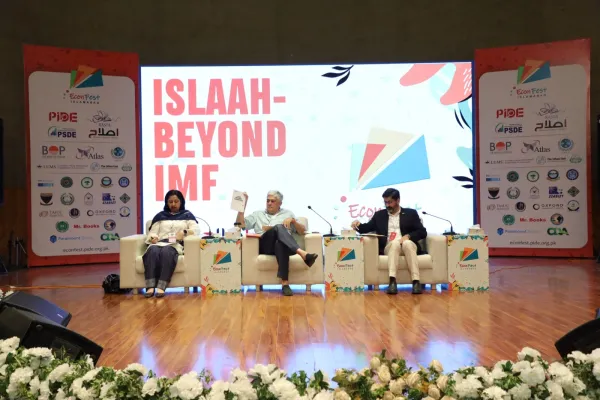i ECONOMY
A recent study on the factors driving inflation in Pakistan has revealed a connection between elite consumption and the government's deficit spending through income distribution. A detailed analysis of consumption expenditure and currency in circulation data was conducted using information from the State Bank of Pakistan (SBP), and economic surveys spanning the last two decades. The focus was on nominal data, which is not adjusted for inflation or changes in price levels. The consumption expenditure in the economy is divided into two main categories: household final consumption expenditure (HFCE) and general government final consumption expenditure (GGFCE). HFCE accounts for all household consumption expenses on final goods and services, while GGFCE represents the government's equivalent consumption expenditure.
To gain perspective, these expenditures were scaled down by the nominal GDP. Additionally, the study included the currency-in-circulation (CIC) data, which was also scaled down by GDP. CIC is the money issued by the central bank, minus what has been removed from the economy. It's analogous to water left on the floor after taking a shower, and its removal depends on the effectiveness of the central bank and the banking system. The central bank issues money to banks, and as it circulates for transactions, it can be held as cash or deposited in banks. When the central bank needs to reduce liquidity in the economy, it withdraws money from the banking system.
"While it is a common belief that inflation is primarily driven by excessive money circulation in the economy, this explanation may not be entirely satisfactory," said Dr Faiz-ur-Rehman, a fiscal expert, while talking to WealthPK. He noted that GGFCE and CIC do not notably exhibit a consistent relationship. "They moved in opposite directions during the first 10 years in the data (from FY03 to FY13) and later moved in the same direction, possibly due to dollar inflows during the initial decade of the war on terror," he explained.
Rehman added that HFCE steadily increased from 73% to 85% over the two decades under review, reflecting a significant trend. "These two decades also marked a shift in the government's growth strategy, with a focus on stimulating consumption-led growth through low interest rates and exchange rates, financed by foreign inflows." "However, this approach has led to short-term economic growth followed by busts, as foreign inflows dried up, resulting in balance-of-payment crisis and subsequent inflationary pressures.
He pointed out that "an important aspect of the study is income distribution, with the top 20% of earners in Pakistan holding 49.6% of the national income, while the bottom 60% own only 29.7%." He further explained that this concentration of income at the top leads to concentrated consumption among the wealthy. Meanwhile, the study also highlights that the top 10% captured a substantial portion of income growth, while the bottom 50% received significantly less, reinforcing income inequality.
As the government injects money into the economy to stimulate growth, the income generated disproportionately benefits the wealthy, who, in turn, spend on imported luxury goods. The study suggests that the wealthy also have a high demand for money, as they seek to invest in the real estate sector, which is largely undocumented and untaxed. In conclusion, the combination of the rich capturing a disproportionate share of income and their consumption habits can contribute to inflation if left unregulated. The study proposes taxing the wealthy and, more importantly, advocating a fairer distribution of income in the economy to address this issue.
Credit: Independent News Pakistan (INP)









